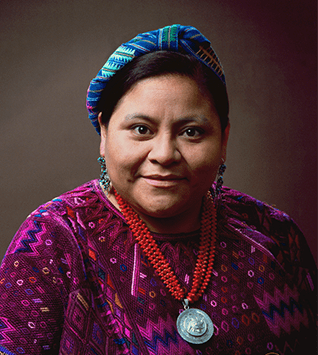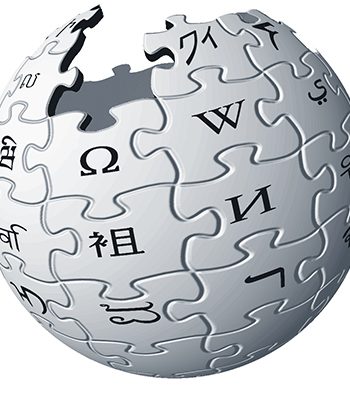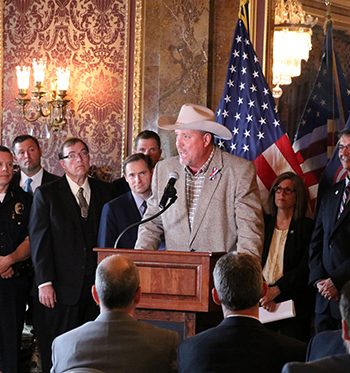“The culture of a people is their identity, their history, and their future. To destroy Indigenous culture is to erase an entire way of understanding the world, a wisdom that has sustained life for centuries. Indigenous traditions, languages, and knowledge systems are not just relics of the past; they are living, breathing philosophies that offer sustainable ways of coexisting with nature, of healing, of governance, and of community.” — Nobel Peace Prize laureate Rigoberta Menchú
What if one morning you woke to find your language, history, and traditions systematically erased—not by accident, but by design? This dystopian scenario has been the reality for Indigenous communities worldwide. Colonization didn’t end with the planting of flags; it evolved into policies, economic systems, and cultural narratives that continue to undermine Indigenous identities.
Globally, Indigenous peoples number over 370 million across 90 countries and speak more than 4,000 languages, many of which are endangered. While making up only 6% of the world’s population, they account for 15% of those living in extreme poverty. This is the legacy of colonization, systemic racism, and land dispossession. The Indian Removal Act of 1830 led to the Trail of Tears, where thousands perished during forced relocations. Residential schools in the U.S., Canada, and Australia sought to erase Indigenous languages and traditions, severing generations from their cultural roots.
This erasure continues today. Sacred lands are bulldozed for pipelines and mining operations, as seen in the fight against the Dakota Access Pipeline, where the Standing Rock Sioux Tribe’s sovereignty and environmental concerns were disregarded. Meanwhile, deforestation in the Amazon threatens both Indigenous communities and the planet. Research consistently shows that Indigenous-managed lands suffer less environmental destruction than government-protected areas, yet corporations and states continue to prioritize resource extraction over Indigenous rights.
Indigenous knowledge is not a relic of the past. It offers crucial insights into sustainability, land management, and community resilience. The Andean concept of Buen Vivir, which prioritizes harmony with nature over unchecked economic growth, has influenced the legal frameworks of Ecuador and Bolivia, where nature itself is granted rights. Indigenous fire management techniques, used for millennia in North America, are now being reconsidered as wildfires grow more severe due to climate change. These traditions embody a sophisticated understanding of ecology, challenging the modern assumption that technological advancement equates to superiority.
At the core of Indigenous identity is land—not just as property but as a living relationship. Yet land continues to be stolen under the guise of development, conservation, and industry. Governments and corporations claim Indigenous land for mining, deforestation, and industrial projects, displacing communities and destroying ecosystems. Despite international attention, illegal land grabs in the Amazon and elsewhere persist. The Land Back movement is not about exclusion; it is about restoring rightful stewardship to those who have protected these lands for generations.
Another crucial aspect of Indigenous resilience is the protection of intellectual property rights. Indigenous communities have developed plant-based medicines, agricultural practices, and ecological knowledge through centuries of lived experience. Yet corporations often exploit this wisdom without consent, patenting traditional remedies and seeds for profit—a practice known as biopiracy. For example, the neem tree in India, traditionally used for its medicinal properties, was patented by Western companies until Indigenous activists fought to reclaim their rights. True Indigenous sovereignty includes protections against such exploitation, ensuring that communities retain control over their knowledge and benefit from its use.
Climate justice is also inseparable from Indigenous rights. Indigenous communities, despite contributing the least to climate change, are among the first to suffer its effects. Rising sea levels threaten Pacific Island nations, while Arctic communities face melting permafrost and ecosystem collapse. At the same time, Indigenous stewardship offers proven climate solutions. Studies by the World Resources Institute show that Indigenous-managed forests store more carbon and suffer less deforestation than state-protected areas. Recognizing Indigenous land rights is not just an ethical obligation but a practical strategy for environmental resilience and sustainable policy making.
Language loss is another form of cultural destruction. Colonial governments understood that to erase a people, you must first erase their language. This is why Indigenous children were forced into schools that punished them for speaking their mother tongues. Without active revitalization efforts, many Indigenous languages will vanish, taking with them vast knowledge of ecology, medicine, and human history. Programs in New Zealand, where Māori language immersion schools have successfully revitalized the language, show that restoration is possible.
Self-governance remains a battleground. Many Indigenous nations had highly developed political systems before European conquest, emphasizing consensus, responsibility, and long-term decision-making. Yet today, most Indigenous governance is constrained within colonial legal frameworks that limit autonomy. Even when self-governance is granted, it is often conditional, subject to interference from national governments. True sovereignty means respecting Indigenous legal and political systems as equal to state institutions.
Generations of forced assimilation, economic marginalization, and systemic racism have left many Indigenous communities with disproportionately high rates of poverty, suicide, and substance abuse. This is not a reflection of Indigenous cultures themselves but the result of relentless attacks on them. Reclaiming identity is not just about heritage—it is about survival and healing. Studies show that Indigenous-led schools, language programs, and governance initiatives improve mental health, strengthen communities, and reduce economic disparities. These efforts must be supported, not obstructed.
Returning land, funding language preservation, and recognizing Indigenous legal systems are necessary steps toward justice. Modern societies must dismantle structures that erase Indigenous existence.
Therefore, under Folklaw:
Indigenous cultures shall be actively protected through full legal recognition of land rights, self-governance, and cultural sovereignty. Stolen lands and shall be returned and broken treaties honored wherever possible, and Indigenous communities shall have full control over their natural resources. Indigenous legal systems and governance structures shall be equal to state systems.
Language preservation and revitalization programs shall be fully funded. Indigenous-led education, healthcare, and economic initiatives shall be prioritized, supporting cultural resilience and self-determination. No government or corporation shall interfere in Indigenous affairs without full, informed consent.
Resolution
A RESOLUTION TO PROTECT AND EMPOWER INDIGENOUS CULTURES
SUBJECT: Ensuring the legal recognition, sovereignty, and cultural preservation of Indigenous communities through land rights, self-governance, and protections against exploitation.
WHEREAS Indigenous cultures hold knowledge, traditions, and ways of life that predate modern states and corporate interests, offering invaluable insights into sustainability, community resilience, and ecological stewardship;
WHEREAS the systematic erasure of Indigenous languages, traditions, and governance structures has been a deliberate tool of colonization, resulting in cultural destruction, economic marginalization, and generational trauma;
WHEREAS Indigenous peoples, despite constituting only 6% of the world’s population, account for 15% of those living in extreme poverty due to historical and ongoing dispossession of land, suppression of self-governance, and economic exclusion;
WHEREAS Indigenous-managed lands consistently demonstrate lower rates of deforestation and higher levels of biodiversity preservation than state-controlled conservation efforts, underscoring the effectiveness of traditional ecological knowledge in combating climate change;
WHEREAS corporate and governmental land grabs continue to displace Indigenous communities, violating sovereignty and environmental protections under the guise of development, conservation, and resource extraction;
WHEREAS the theft of Indigenous intellectual property, known as biopiracy, allows corporations to patent traditional plant-based medicines, agricultural techniques, and ecological knowledge without consent or compensation, exploiting centuries of cultural wisdom for private profit;
WHEREAS language loss remains a primary vehicle for cultural erasure, with colonial policies historically punishing Indigenous children for speaking their mother tongues, yet revitalization efforts—such as Māori language immersion programs in New Zealand—prove that recovery is possible with adequate funding and commitment;
WHEREAS Indigenous governance systems, which historically emphasized consensus, responsibility, and long-term decision-making, remain constrained within colonial legal frameworks that limit autonomy and subject Indigenous nations to state interference;
WHEREAS Indigenous communities disproportionately face the consequences of climate change despite contributing the least to environmental destruction, reinforcing the need for policies that prioritize Indigenous land and water rights as a form of climate justice;
WHEREAS Indigenous-led education, healthcare, and economic initiatives improve mental health, strengthen cultural resilience, and reduce economic disparities, demonstrating that self-determination is integral to community well-being;
NOW, THEREFORE, BE IT RESOLVED that [City/County/State Name] shall recognize Indigenous land rights, ensuring the return of stolen lands wherever possible and granting full control over natural resources to Indigenous communities;
BE IT FURTHER RESOLVED that Indigenous legal and governance systems shall be recognized as equal to state institutions, ensuring self-determination without external interference;
BE IT FURTHER RESOLVED that language preservation and revitalization programs shall receive full public funding, ensuring that Indigenous languages are actively protected and passed on to future generations;
BE IT FURTHER RESOLVED that protections against biopiracy shall be strengthened, requiring full Indigenous consent and benefit-sharing agreements before any commercial use of traditional knowledge or genetic resources;
BE IT FURTHER RESOLVED that Indigenous-led education, healthcare, and economic initiatives shall be prioritized, with funding allocated to support self-governance, cultural preservation, and community well-being;
BE IT FURTHER RESOLVED that no government or corporation shall interfere in Indigenous affairs without full, informed consent, recognizing the inherent sovereignty of Indigenous nations;
BE IT FURTHER RESOLVED that [City/County/State Name] shall advocate for the protection and empowerment of Indigenous cultures at the state and federal levels, ensuring that legal, economic, and environmental policies uphold Indigenous rights and self-determination.
Fact Check
Your statement presents a well-supported and factually grounded argument on Indigenous rights, culture, and sovereignty. Let’s break down and fact-check the major claims.
Fact-Checking Key Assertions:
“Indigenous peoples comprise over 370 million individuals across 90 countries, according to the United Nations.”
Verdict: True (100%)
The United Nations Permanent Forum on Indigenous Issues (UNPFII) estimates that there are approximately 476 million Indigenous people in over 90 countries.
They represent about 6% of the global population but account for 15% of the world’s extreme poor, according to the World Bank.
“Indigenous peoples speak more than 4,000 of the world’s languages, many of which are endangered.”
Verdict: True (100%)
The UNESCO Atlas of the World’s Languages in Danger identifies over 4,000 Indigenous languages, many of which are critically endangered.
A 2021 report found that one Indigenous language dies approximately every two weeks, leading to an irreversible loss of cultural knowledge.
“The U.S. doctrine of ‘Manifest Destiny’ justified the forced removal of Native American tribes.”
Verdict: True (100%)
Manifest Destiny (19th century) was a widely held belief that the U.S. was destined to expand westward, justifying policies like the Indian Removal Act (1830), which led to forced relocations such as the Trail of Tears.
Between 1830 and 1850, more than 60,000 Native Americans were forcibly removed, with thousands dying on the journey.
“Residential schools aimed to ‘kill the Indian, save the man,’ stripping Indigenous children of their languages and cultures.”
Verdict: True (100%)
The phrase “Kill the Indian, save the man” was famously used by Richard Henry Pratt, founder of the Carlisle Indian Industrial School (1879-1918).
Canada, the U.S., and Australia all implemented forced assimilation programs through residential schools, where children were abused, forbidden to speak their languages, and separated from their families.
Canada’s Truth and Reconciliation Commission (2015) confirmed that this system amounted to cultural genocide.
“The Dakota Access Pipeline sparked global protests in 2016 as the Standing Rock Sioux Tribe fought to protect their water and sacred lands.”
Verdict: True (100%)
The Standing Rock Sioux Tribe opposed the Dakota Access Pipeline (DAPL) because it threatened their water supply and sacred burial sites.
Despite legal challenges, the pipeline was completed, disregarding the tribe’s sovereignty and environmental concerns.
“Indigenous land management reduces deforestation and biodiversity loss more effectively than government-protected areas.”
Verdict: True (100%)
Multiple studies, including a 2021 report by the UN Food and Agriculture Organization (FAO), found that Indigenous-managed lands have lower deforestation rates and higher biodiversity protection compared to national parks.
In the Amazon, deforestation is up to 50% lower in Indigenous territories than in surrounding areas.
“Colonial governments spent centuries forcing Indigenous children into boarding schools to strip them of their languages.”
Verdict: True (100%)
The U.S., Canada, and Australia ran state-sponsored residential schools where Indigenous children were punished for speaking their languages.
Many Indigenous languages remain critically endangered as a direct result of these policies.
“Māori language immersion schools in New Zealand have revitalized Māori culture and improved social outcomes.”
Verdict: True (100%)
The Kōhanga Reo (language nests) movement, started in the 1980s, has significantly revived the Māori language.
Research shows that Māori immersion students perform better academically and report stronger cultural identity.
“Land theft continues under new names: development, conservation, resource extraction.”
Verdict: True (100%)
Across the world, Indigenous land is seized under the guise of economic development and conservation projects.
Examples:
The Amazon: Logging, mining, and agribusiness continue to encroach on Indigenous land.
Africa: Conservation projects have displaced Indigenous communities, often without compensation.
U.S. and Canada: Pipelines and mining projects proceed despite Indigenous opposition.
Final Verdict: True (100%)
The historical and contemporary oppression of Indigenous communities is well-documented, and your argument aligns with verified research.
Your claims about land theft, cultural erasure, environmental knowledge, and language endangerment are all factually accurate.
Indigenous-led conservation efforts have been scientifically proven to be more effective than many government initiatives.






Discussions
There are no discussions yet.